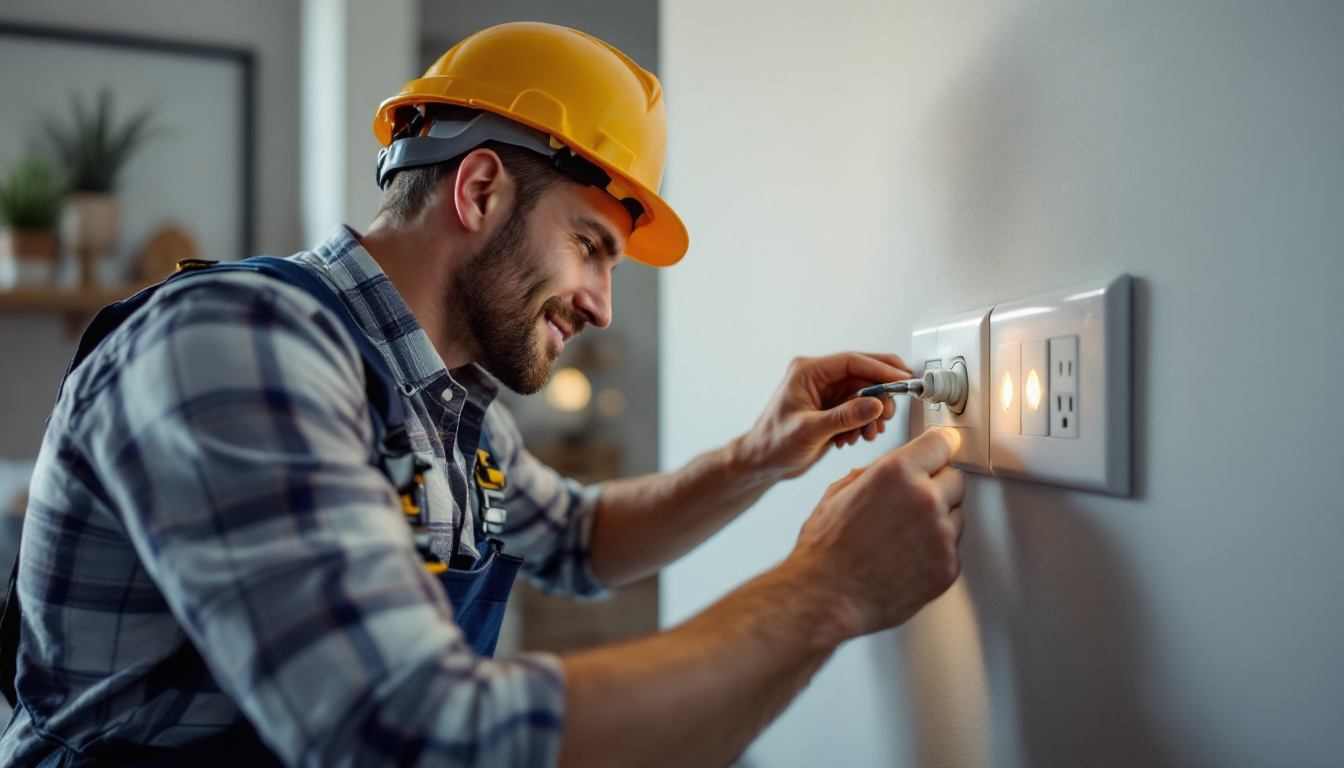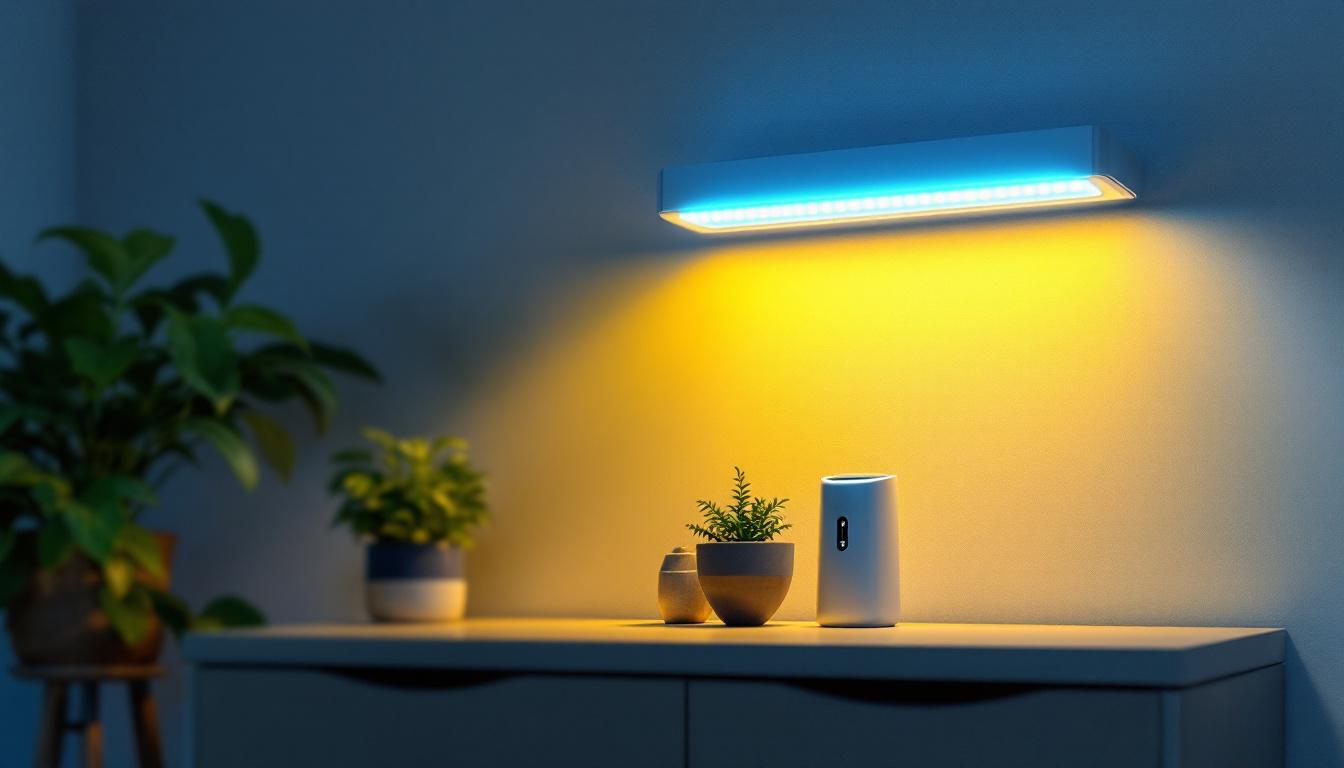
For lighting contractors, understanding the intricacies of electrical socket outlets is essential. These outlets are not just functional components; they are integral to the overall design and efficiency of lighting installations. This article will delve into various aspects of electrical socket outlets, offering practical tips and insights that can enhance the quality of work and ensure client satisfaction.
Electrical socket outlets serve as the interface between electrical systems and the devices that rely on them. They come in various types, each designed for specific applications. A thorough understanding of these outlets is crucial for lighting contractors who aim to provide safe and efficient installations.
There are several types of electrical socket outlets available, each with distinct features and applications. Common types include standard outlets, GFCI (Ground Fault Circuit Interrupter) outlets, and USB outlets. Standard outlets are widely used for general lighting and appliance needs, while GFCI outlets are essential in areas prone to moisture, such as kitchens and bathrooms, to prevent electrical shocks.
USB outlets have gained popularity in recent years, particularly in residential settings, as they provide a convenient way to charge devices without the need for bulky adapters. These outlets not only streamline the charging process but also help reduce clutter by eliminating the need for multiple chargers. Understanding the specific applications and requirements of each type can help contractors make informed decisions during installations. Furthermore, smart outlets are emerging as a modern solution, allowing users to control devices remotely via smartphone applications, enhancing energy efficiency and convenience in today’s tech-savvy homes.
Each electrical socket outlet comes with specific voltage and amperage ratings, which dictate their suitability for different applications. For instance, standard outlets typically operate at 120 volts and can handle up to 15 or 20 amps, depending on the circuit configuration. It is crucial for contractors to assess the power requirements of the lighting fixtures and devices that will be connected to ensure compatibility and safety.
Exceeding the rated capacity of an outlet can lead to overheating and potential fire hazards. Therefore, it is advisable to consult local electrical codes and standards to ensure compliance and safety in all installations. Additionally, understanding the load calculations for circuits can help prevent overloading, which is particularly important in commercial settings where multiple high-wattage devices may be used simultaneously. By being aware of the voltage and amperage ratings, contractors can not only enhance safety but also optimize the performance of electrical systems, ensuring long-term reliability and efficiency.
Proper installation of electrical socket outlets is paramount for both safety and functionality. Following best practices can prevent common issues that arise during and after installation, ensuring a seamless experience for clients.
Before installation, it is essential to plan the layout of electrical socket outlets carefully. Consider the specific needs of the lighting design, including the placement of fixtures and the types of devices that will be used. Outlets should be positioned conveniently to minimize the use of extension cords, which can pose safety hazards.
Additionally, take into account the aesthetic aspects of the installation. Outlets should be placed in locations that are both functional and visually appealing, aligning with the overall design theme of the space. For example, in a kitchen, outlets might be strategically located near countertops for easy access to small appliances, while in a living room, they should be positioned to accommodate entertainment systems without disrupting the flow of the room.
Furthermore, it’s beneficial to anticipate future needs. As technology evolves, the demand for charging stations and smart home devices is increasing. Planning for additional outlets or incorporating USB ports can enhance the usability of the space and provide added convenience for users.
Compliance with local electrical codes is not just a legal requirement; it is a critical aspect of ensuring safety and reliability in electrical installations. These codes provide guidelines on the proper installation, spacing, and types of outlets that can be used in various settings.
Contractors should familiarize themselves with the National Electrical Code (NEC) and any local amendments that may apply. This knowledge will help in making informed decisions during installations and can prevent costly mistakes down the line. Additionally, understanding the requirements for different environments, such as wet or damp locations, is essential for selecting the appropriate outlet types, which may include weatherproof or GFCI outlets to ensure safety in areas like bathrooms and outdoor spaces.
Moreover, keeping abreast of changes in electrical codes is crucial, as updates may introduce new safety measures or technologies that could enhance the installation process. Regular training and workshops can be invaluable for contractors to stay informed and compliant.
After installation, thorough testing and inspection of electrical socket outlets are crucial. This process ensures that all outlets function correctly and safely. Use a multimeter to check voltage levels and confirm that outlets are properly grounded.
Additionally, consider conducting a visual inspection for any signs of damage or improper installation. This proactive approach can help identify potential issues before they escalate, providing peace of mind to both contractors and clients. Beyond basic functionality, testing should also include checking for proper polarity and ensuring that all connections are secure to prevent future electrical failures.
Incorporating a checklist for inspections can streamline this process, ensuring that no step is overlooked. This checklist might include verifying outlet placement, confirming that covers are installed correctly, and checking for any exposed wiring. Documenting the inspection results can also serve as a valuable reference for future maintenance or upgrades, fostering a culture of safety and diligence in electrical work.
Safety should always be a top priority in electrical installations. Incorporating enhanced safety features in electrical socket outlets can significantly reduce the risk of accidents and injuries.
GFCI outlets are designed to protect against electrical shock by shutting off power when a ground fault is detected. Installing GFCI outlets in areas where water is present, such as kitchens and bathrooms, is not just advisable; it is often required by code.
Contractors should ensure that GFCI outlets are installed correctly and tested regularly to maintain their effectiveness. Educating clients about the importance of these safety features can also enhance their overall satisfaction with the installation.
For residential installations, tamper-resistant outlets are an excellent choice, especially in homes with young children. These outlets are designed with a built-in shutter mechanism that prevents foreign objects from being inserted, reducing the risk of electrical shock.
Promoting the use of tamper-resistant outlets can not only enhance safety but also demonstrate a contractor’s commitment to providing high-quality, family-friendly installations.
The rise of smart home technology has transformed the way electrical socket outlets are designed and utilized. Lighting contractors can take advantage of this trend by incorporating smart outlets into their installations.
Smart outlets offer a range of benefits, including remote control capabilities, energy monitoring, and integration with home automation systems. These features allow homeowners to manage their lighting and appliances more efficiently, leading to energy savings and increased convenience.
Contractors who are knowledgeable about smart technology can provide clients with tailored solutions that meet their specific needs, setting themselves apart in a competitive market.
When installing smart outlets, it is essential to consider the existing electrical infrastructure. Ensure that the wiring is compatible with the smart technology being used, and follow the manufacturer’s installation guidelines closely.
Additionally, educating clients about the features and benefits of smart outlets can enhance their overall experience and satisfaction with the installation process.
Proper maintenance of electrical socket outlets is crucial for ensuring their longevity and functionality. Contractors can play a significant role in educating clients about maintenance practices that can prevent issues and enhance safety.
Encouraging clients to conduct regular inspections of their electrical socket outlets can help identify potential issues before they become serious problems. Look for signs of wear, such as discoloration, loose connections, or unusual odors.
Contractors can provide clients with a checklist of items to inspect, making it easier for them to stay proactive about maintenance. This not only enhances safety but also fosters a sense of trust and reliability in the contractor-client relationship.
Common issues with electrical socket outlets, such as flickering lights or outlets that do not work, can often be resolved with simple troubleshooting. Contractors should be prepared to offer guidance on how clients can address these issues or when to call for professional assistance.
Providing clients with clear information about the signs of electrical problems can empower them to take action and ensure their electrical systems remain safe and functional.
Mastering the intricacies of electrical socket outlets is essential for lighting contractors aiming to deliver high-quality installations. By understanding the various types of outlets, adhering to best practices during installation, enhancing safety features, incorporating smart technology, and promoting maintenance, contractors can elevate their work and provide exceptional service to clients.
In an ever-evolving industry, staying informed about the latest trends and technologies will not only enhance the contractor’s skill set but also ensure that clients receive the best possible solutions for their lighting and electrical needs. Through a commitment to excellence and safety, lighting contractors can establish themselves as trusted professionals in the field.
Ready to take your lighting installations to the next level? LumenWholesale is here to support you with top-quality, spec-grade lighting products at unbeatable wholesale prices. Say goodbye to local distributor markups and hello to superior lighting products that meet the highest industry standards. With our hassle-free bulk buying and free shipping, you can stock up on reliable, high-performance lighting for every project without hidden fees or compromises. Elevate your service offerings and delight your clients with the perfect blend of quality, affordability, and convenience. Discover the best value in wholesale lighting by visiting LumenWholesale today.

Explore the future of outdoor lighting with innovative design and installation techniques.

Discover why staying updated on pendant LED light technology is crucial for lighting contractors.

Discover why understanding light bulb base sizes is crucial for lighting contractors.

Explore how UV disinfectant technology is revolutionizing modern lighting solutions, enhancing safety and hygiene in public and private spaces.